Use of ‘found objects’ in textile art can be a serendipitous joy ride for both the artist and the viewer.
First, there’s the artist’s thrill in finding an object whose physical attributes are only heightened by the circumstance and location in which it is found. Then there’s the viewer’s surprise at stumbling across that same object in yet another new circumstance and location: the art piece itself.
The mechanics of how found objects are embedded into textile art are equally exciting and imaginative. The artist as collector becomes the artist as presenter, inventing ways to attach and adorn objects of all shapes, sizes and colours.
Textile artist Maria Thomas is a master at finding and embedding found objects in ways that tell remarkable stories of life, love and loss. And her use of vintage textiles adds yet more meaning to the notion of treasured keepsakes and mementoes.
Maria is generously sharing a look into her mixed media techniques, as well as her passion for re-using and repurposing fabrics to connect with the past. She has also provided detailed images of embedded objects that we think you’ll find quite remarkable.
Maria is originally from South Wales and currently lives in Warwickshire, England. She has designed textiles for fashion and exhibited regularly, and her work is featured in public and private collections in the UK and overseas. Her work has also been featured in books and magazines, including the front cover of Embroidery magazine. Maria also runs an independent embroidered textile course, and tutors and lectures throughout the UK. She is thrilled to have recently been invited to exhibit at the Knitting and Stitching Show in 2021.
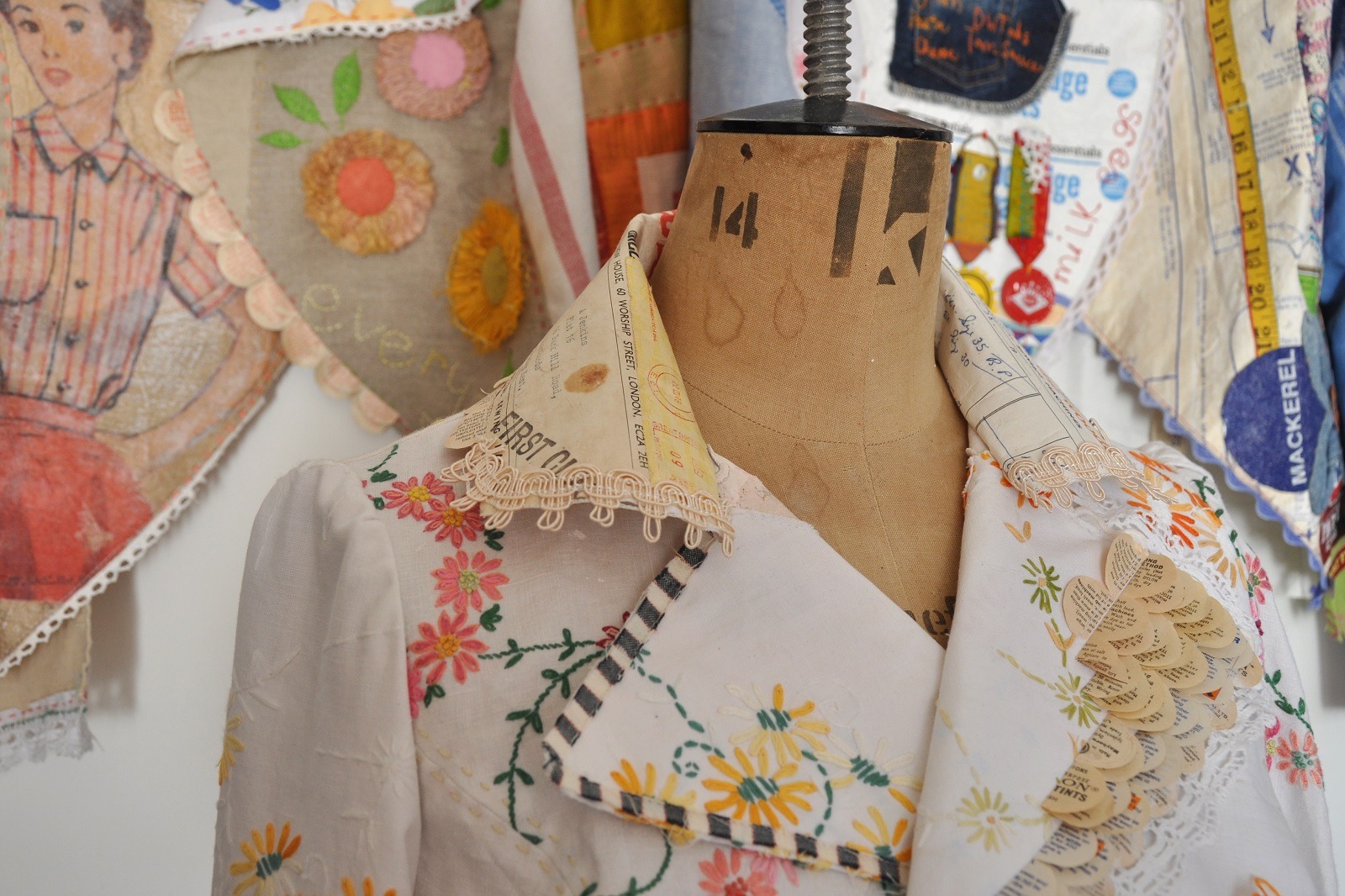
An early love for textiles and fashion
What initially attracted you to textiles as a medium? How was your imagination captured?
As a child, I had a very strong desire to engage with stitch and cloth. From an early age, I was always cutting up old bedspreads and hand-me-down garments, reworking them and creating something new. It was a pleasurable pastime that has never left me.
My mother’s sewing machine fascinated me, and I remember clearly taking in a pair of flared trousers to make drain pipes at around nine years of age. From there, whole outfits emerged from old bedspreads and curtains, mainly co-ordinates that may have only lasted one wear before they became something else.
At 14, my Mum took me shopping for a dressmaking pattern, and we bought the proper fabric to make it up. It was so exciting and made me feel very accomplished. I still like following a pattern and making things properly now and again.
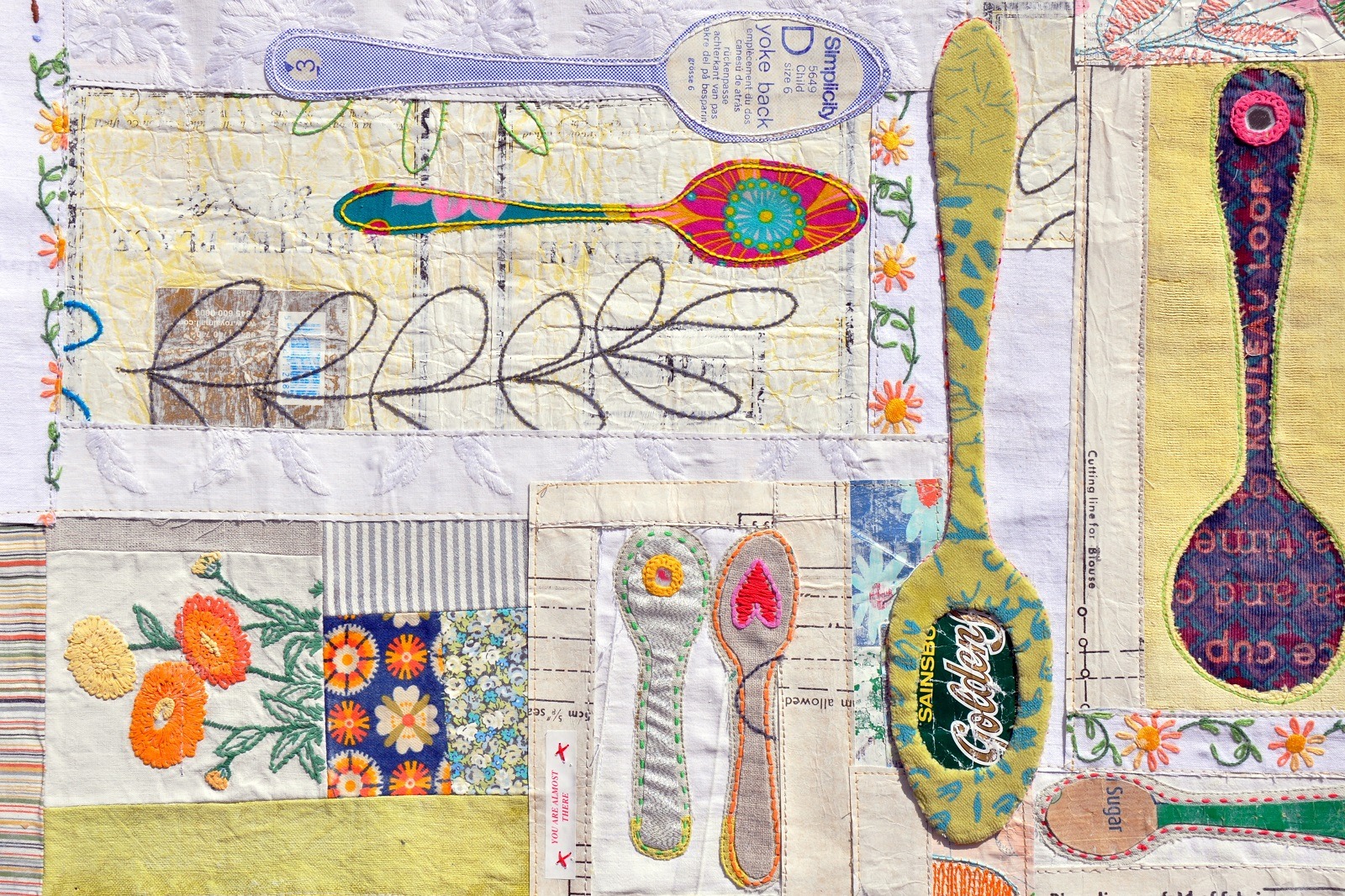
What or who were your early influences and how has your life/upbringing influenced your work?
My parents owned an interior design business, and I grew up in a home filled with bold colours, textures and patterns. It was a very creative place to be with inspiring design and beautiful home furnishings in every room.
My very first interest in sewing evolved from spending many hours with my maternal grandmother. Nana would always be knitting or altering a garment or two. This led me to follow a path into fashion and textiles, where I took great pleasure in exploring surface pattern and embroidered textile design.
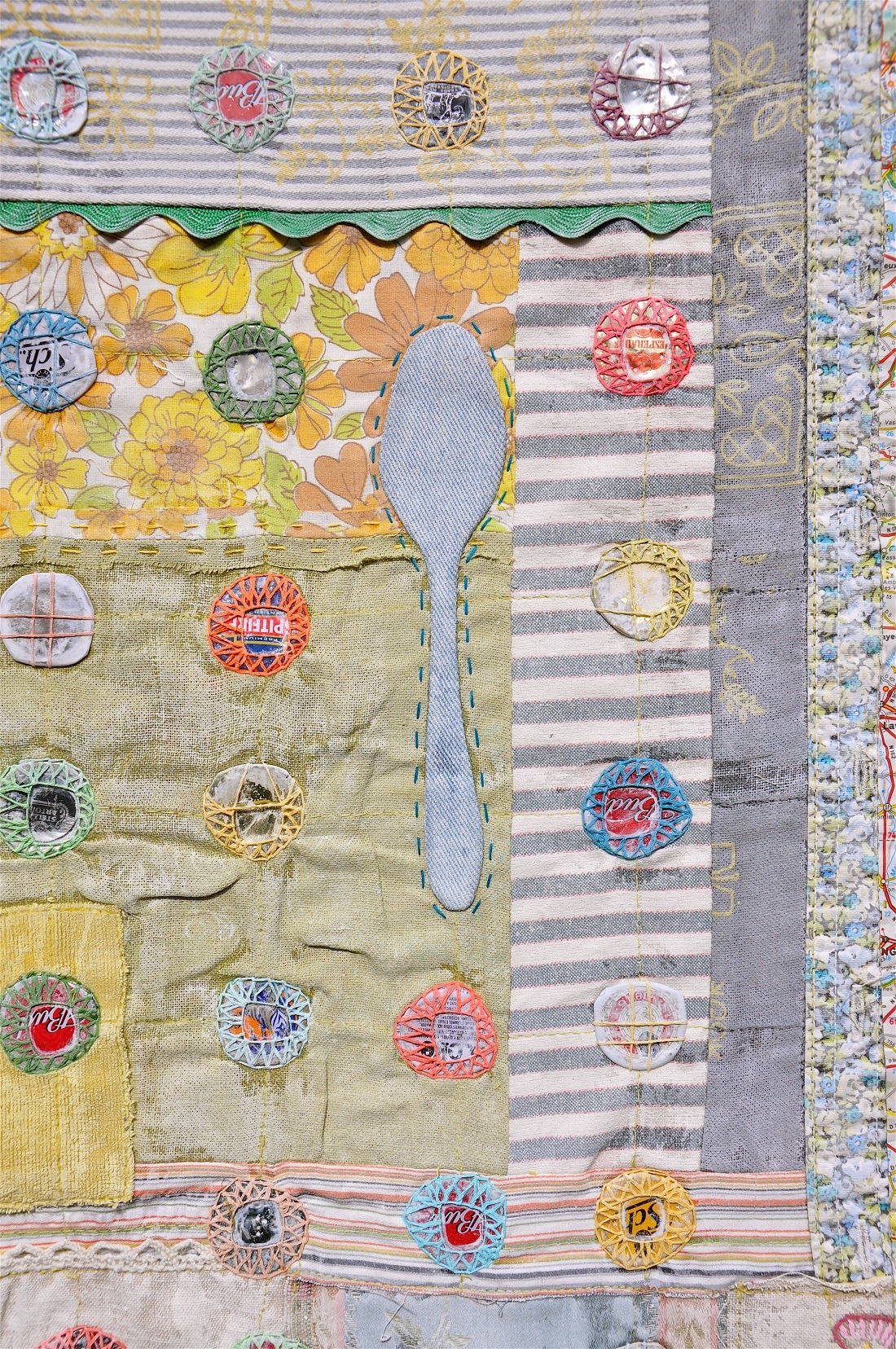
What was your route to becoming an artist?
During the 80’s, I studied Printed Textiles at Mid-Warwickshire College in Leamington Spa, followed by a degree in Embroidery at Manchester School of Art, which I absolutely loved!
The Embroidery course at Manchester focused on learning a wide variety of traditional embroidery techniques and processes. Through drawing and experimentation, we were encouraged to develop our own unique and individual approach to making contemporary textile art.
Using meaningful found objects in my work began at this time, as well as a lifelong love of sourcing both old and new cloth to dye, embellish and rework.
So much so, I went on to do a masters in Textiles at The University of Central England in Birmingham (now known as Birmingham City University) before returning to my local college of art to teach textiles and drawing for over 25 years.
My work is about piecing small items of cloth and found objects together, growing slowly. It can’t be rushed, and over time, it has become an integral part of my teaching career. Teaching Textiles is an opportunity to share my passion for textiles and cloth with my students, and the enthusiasm I receive back carries me forward. It’s like an unspoken exchange of creative energy.
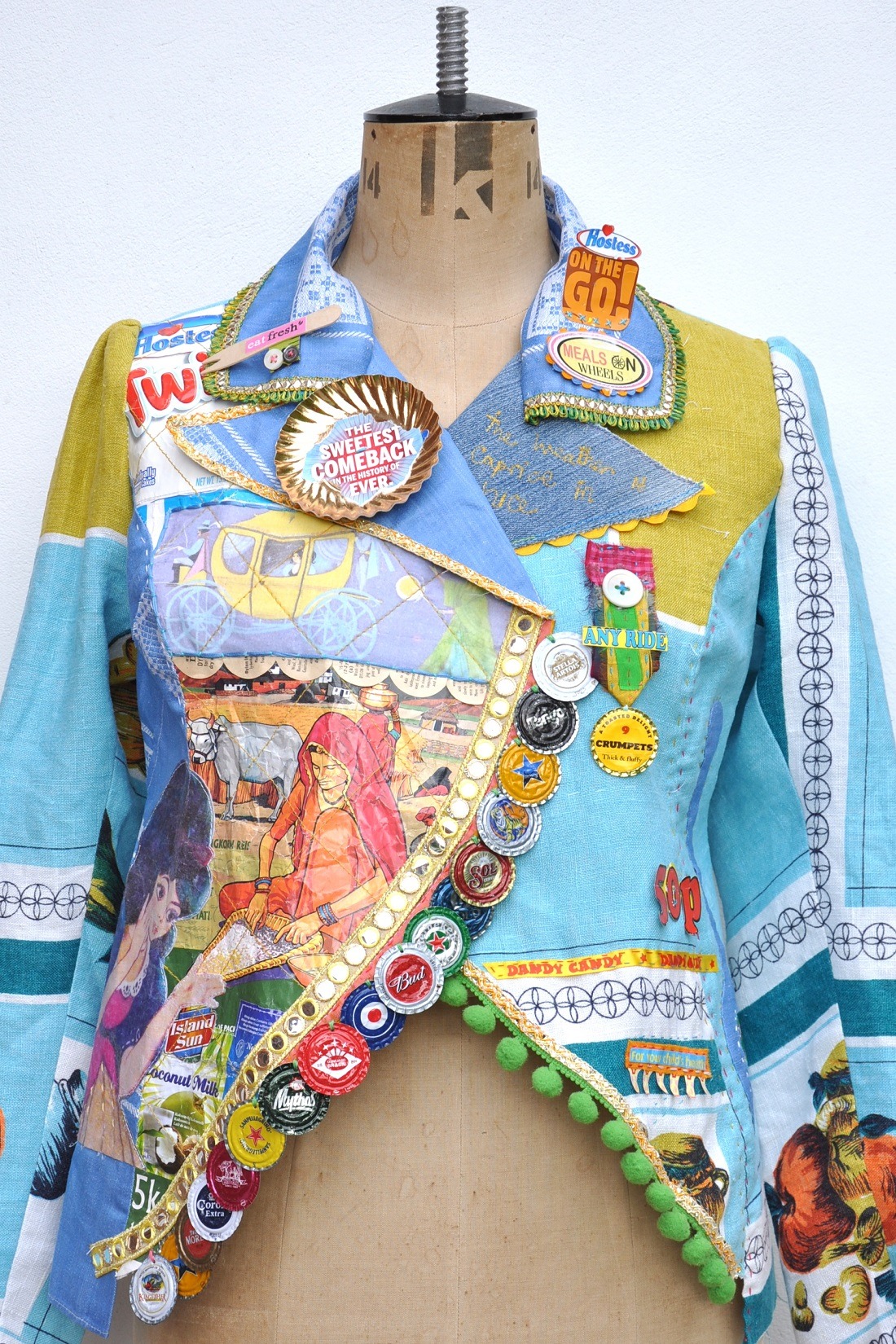
The magic of ‘found objects’
Tell us about your process from conception to creation
I make to capture a moment and find purpose in using fabrics and found objects that have had an earlier life. The idea that cloth can hold a connection to the past interests me and inspired me to include them in my work.
I also appreciate how the language of an object holds memories and triggers a response.
The fabrics I use in my work come from a mix of sources ranging from traditional fabric shops, charity shops, vintage markets, jumble sales and old clothing from my family. I prefer to work with natural fibres, but with vintage that isn’t always possible.
Sometimes the pattern and colour of a piece of cloth will catch my eye.
My most favourite fabric is natural linen as it takes dye so beautifully, and it’s also wonderful on which to stitch and print. I love its drape and the way it feels to handle.
Abandoned objects and residual marks also often attract my attention, sparking an idea.
I was a bit of a skip dipper (salvaging from dumpsters and bins) at college and forever gathering all sorts of redundant objects from old road signs to bedsprings. I used to put smaller things in my pocket or sketchbook as I went along. They were reminders, memory joggers and often connected with an idea or notion I had going on at the time.
Nowadays I cook so much for my family that the finds regularly come to me through food packaging and recycling. I am drawn to papery objects, strong colours and graphic texts and imagery.
I gather and keep items I find appealing as mementos or tokens from a moment in time I experienced—a little bit like a visual diary. Kind folk also often give me random found items. But they are not my finds…they are theirs.
One of the first found objects I included in my work was a Wrigley’s Juicy Fruit wrapper discovered on my journey to college. I used many of those wrappers in a repeat pattern by creating a hand-stitched piece of Traditional English Patchwork.
The piece was inspired by a great uncle who used to send my sister and me Juicy Fruit through the post. You could smell the sweet sugary gum as the envelope dropped in through the letterbox.
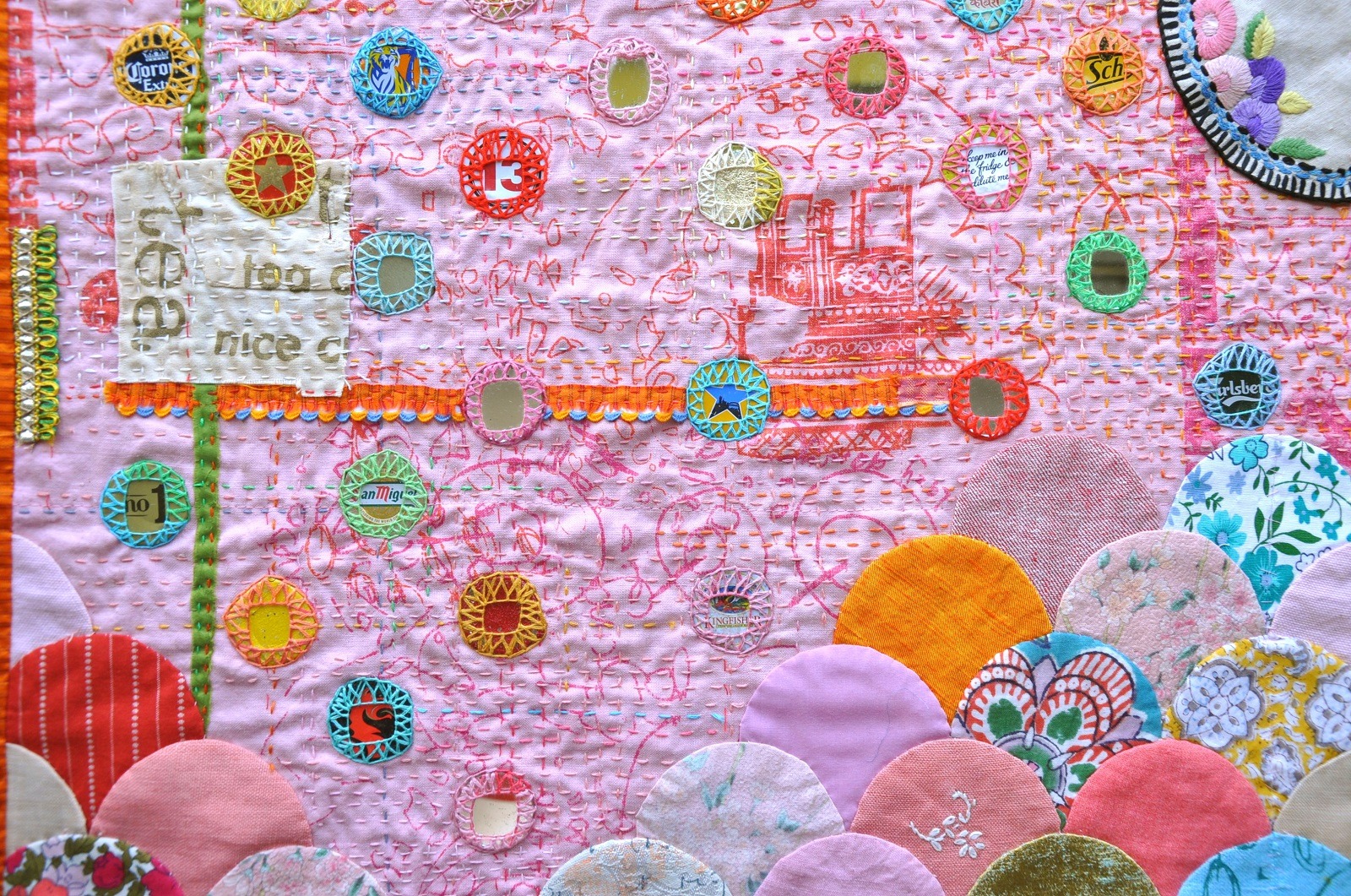
Tell us a bit about your chosen techniques and how you use them
I love to revisit the hand stitching methods of Kantha quilting and Shisha Embroidery and echo them in my work. Instinctively I am drawn to quilted textiles, the layering up and the comfort they offer.
My teachers at Manchester had a huge influence on my work. Anne Morrell, who was the head of the course at the time, inspired us with her love of Indian textiles and kantha quilts. We would spend time drawing them and exploring the stitches to influence our own embroideries.
I enjoyed the way the stitching changed the weight and surface of the fabric—the interruption they make upon the cloth. And the piecing together and reusing textiles in this way totally appealed to me.
Another very supportive tutor Isabel Dibden Wright often encouraged me to go big and bold with my pieced and quilted work.
Stitching by hand and holding the work as it grows is a process that is important to me. It slows me up and gives me an opportunity to leave my mark upon the cloth.
I love running stitch, as it’s so simple, but can be varied so much. The most important thing to me when selecting threads is the colour, or more specifically, the shade. Sometimes it’s about weight and thickness of the thread. I have a wonderful stash as I’ve been gifted so many threads over time.
Working directly with everyday objects, my finds are carefully sourced, cut out and sometimes stitched before being absorbed into the fabric with patchwork and quilting techniques.
I use a lot of traditional patch-working techniques to attach my found objects. Traditional English Patchwork and Cathedral Windows are great for housing found papers and snippets of cloth. And of course, patchwork is a wonderful way to incorporate pieces of fabric from clothing once owned by loved ones.
The ‘marks’ I make usually come from screen printing and hand stitching, but more often it’s about the found object and how I can house it.
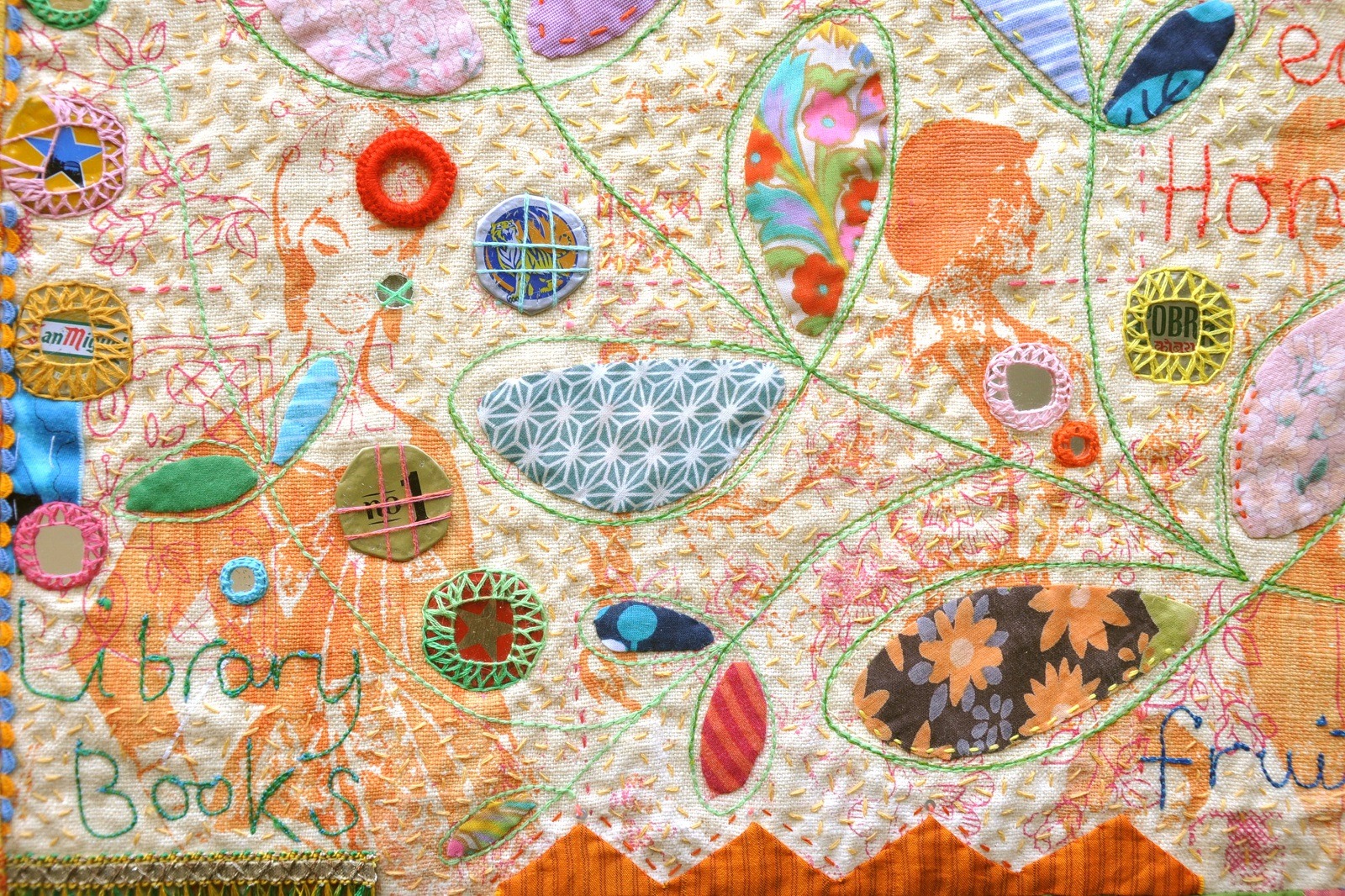
What currently inspires you?
Memories, family ties and cherished relationships. How time evolves who we are. History, traditions and my sense of belonging. Home.
My work is about connecting things that I find, creating memory keepers and symbols of love that tell a tale of family life.
My dad passed away when I was studying for my masters in textiles. He was such a huge supporter of my work, often helping me with both the practical and academic sides of textiles as art and expression.
I used to think ‘How could objects remain when my lovely dad had gone?’ And subconsciously, I think everything I create connects back to that loss.
His passing happened just as I had begun to make my way in textiles. By the end of my MA, I had come to realize that cloth can hold a connection to the past and that the language of an object holds memories and triggers a response.
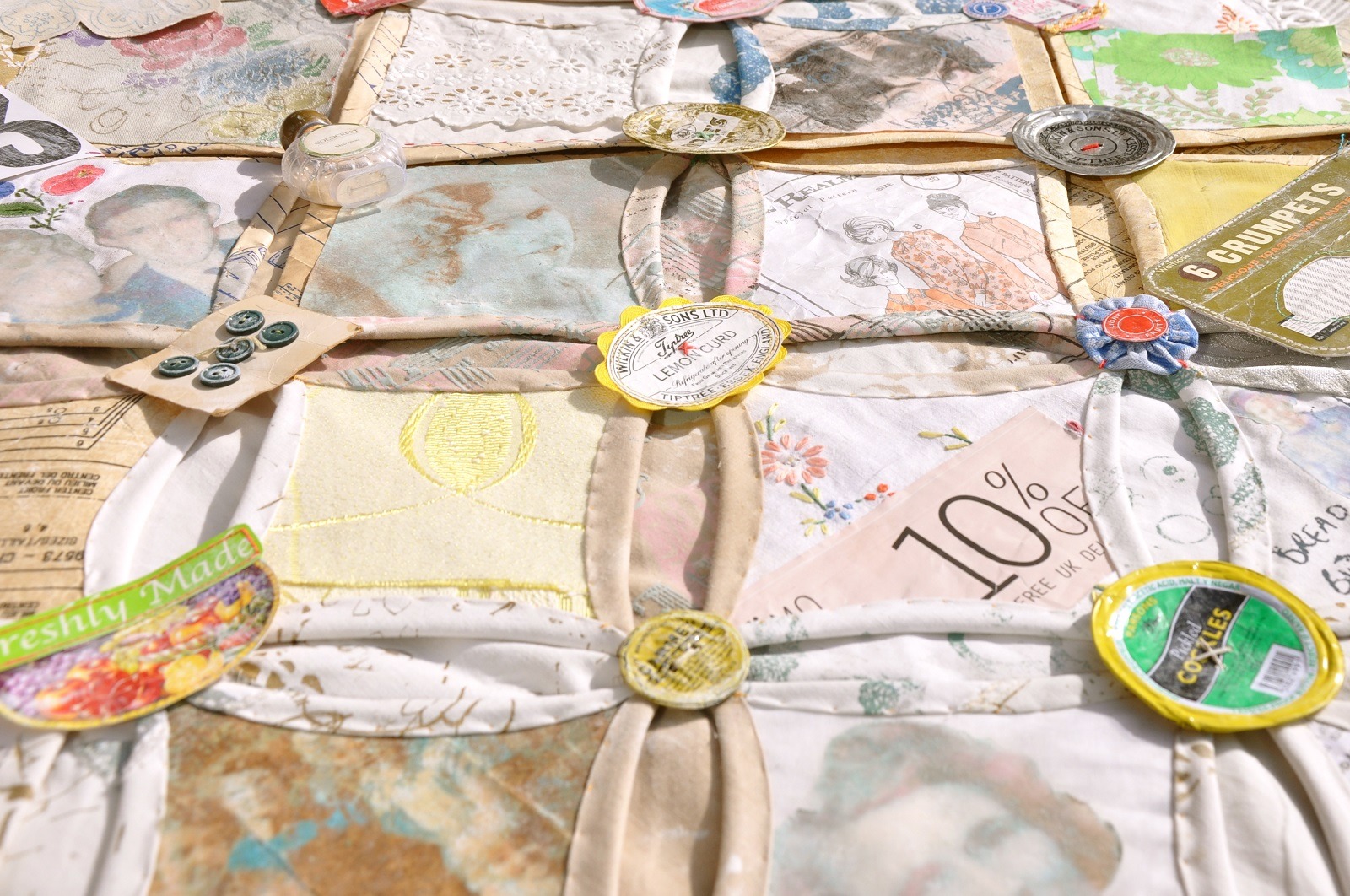
Connections with cloth and stitch
Tell us about a piece of your work that holds particularly fond memories and why?
‘Free Range Egg Custard Tart’ from the ‘Housecoat Series’ (motherhood jackets) is a favourite. It was inspired by a trip to town with my Nana. Whilst out shopping ‘for a bargain,’ we would often have a cuppa and egg custard tart from her favourite café before catching the bus home to unpick and reinvent that day’s fashion finds. I miss her every day.
The term ‘motherhood Jacket’ comes from remembering how my mother always used to wear a housecoat. When she came home from work, she would put her housecoat over her blouse and slip (hanging up her pencil skirt for another day) and cook tea for us whilst knowing she would be glamorous enough to answer the front door and pay the milkman should she need to.
I thought about this idea of how a garment could be a representation of my motherhood experiences and came up with several versions of how my housecoat or ‘motherhood jacket’ would look. Often overloaded by trying to be a super woman like my mum, I don’t feel glamorous at all—just submerged in to-do lists and my domestic chaos.
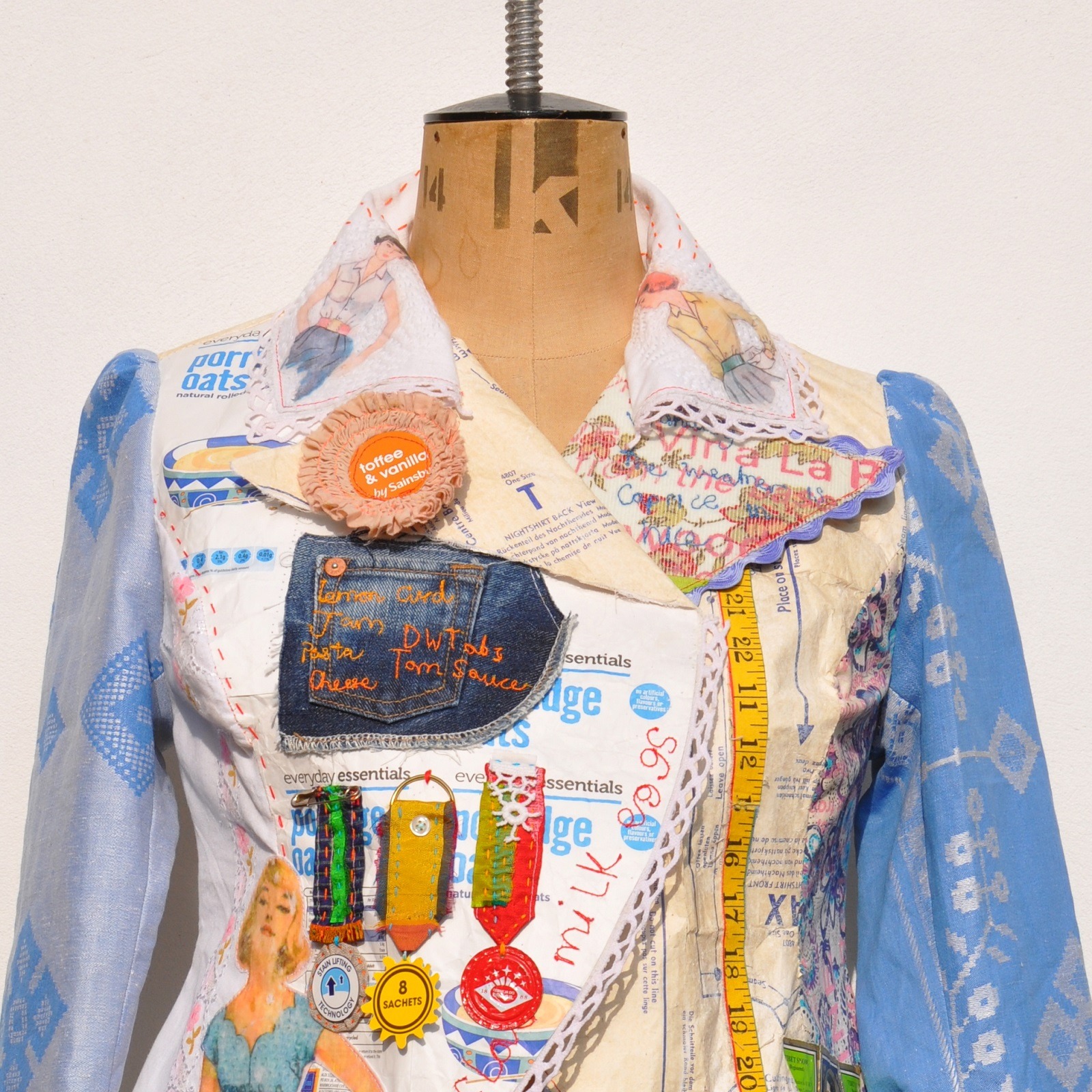
How has your work developed since you began and how do you see it evolving in the future?
Over time, my work has become more refined and personal, with my most recent pieces being garments and artefacts that explore close family relationships and my sense of belonging. For now, I will continue with this theme for as long as they (my family) need me to respond to them.
Looking forward, I would like to progress further into garment making, focusing on cloth that gives comfort whilst holding onto the art of decorative stitch traditions, reclaiming paper ephemera and recycling cloth to make hand-quilted patchworks.
For more information visit www.mariathomastextiles.co.uk and on Instagram
Maria uses a variety of found objects and other ephemera in her work. How have you used similar objects in your own work? Let us know below.
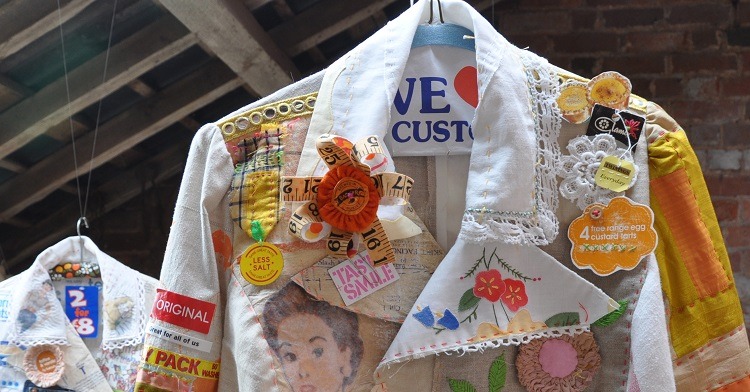

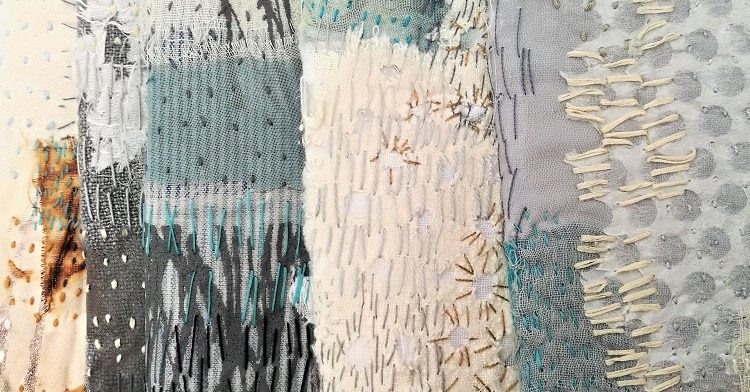
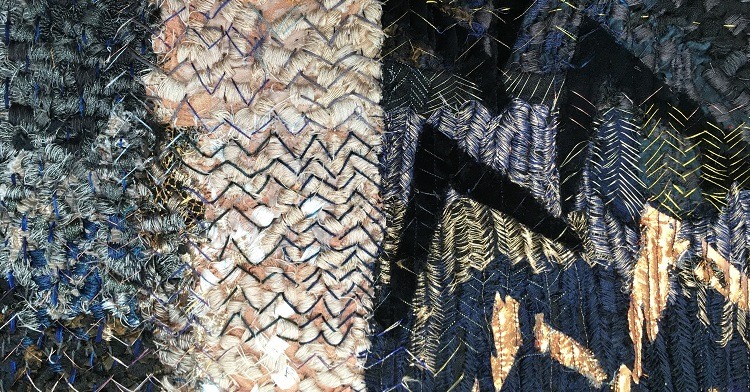
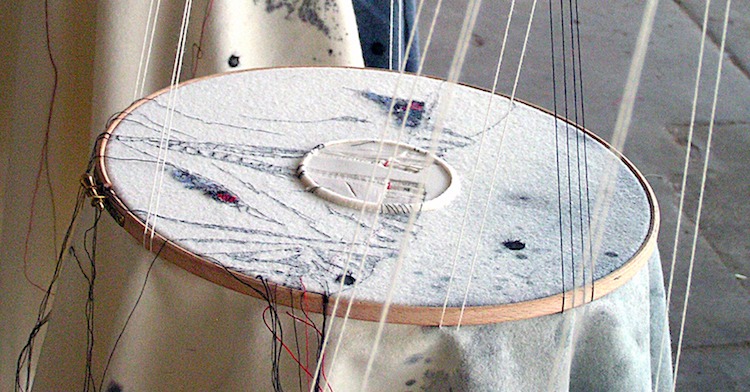
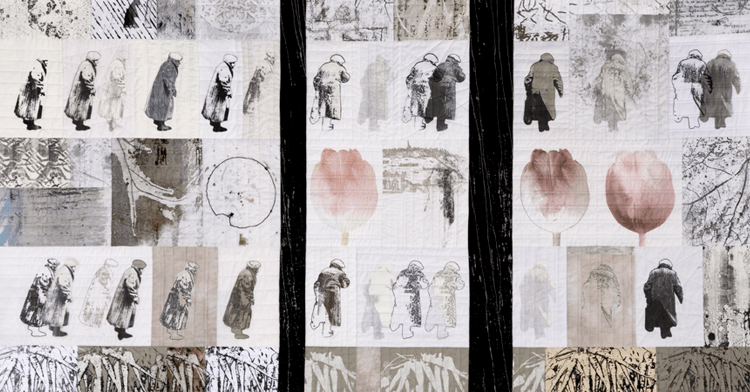
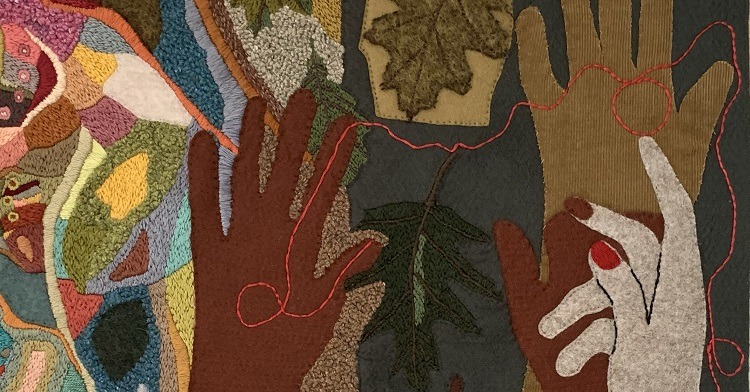
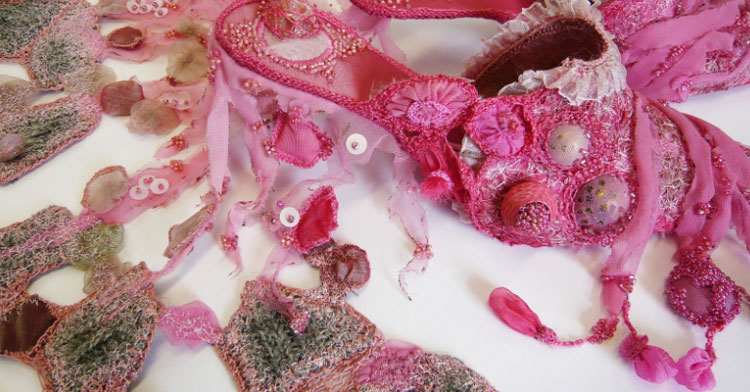
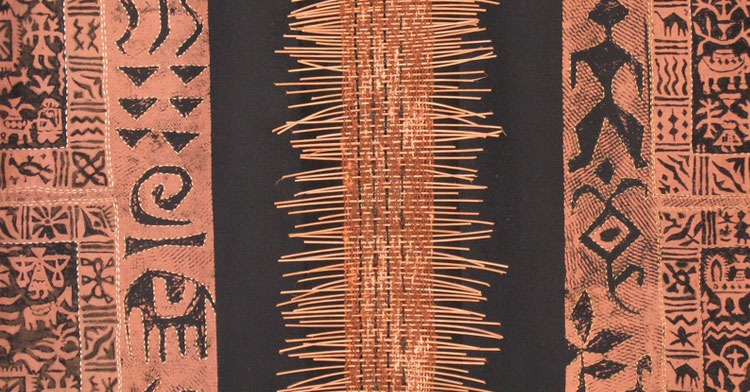
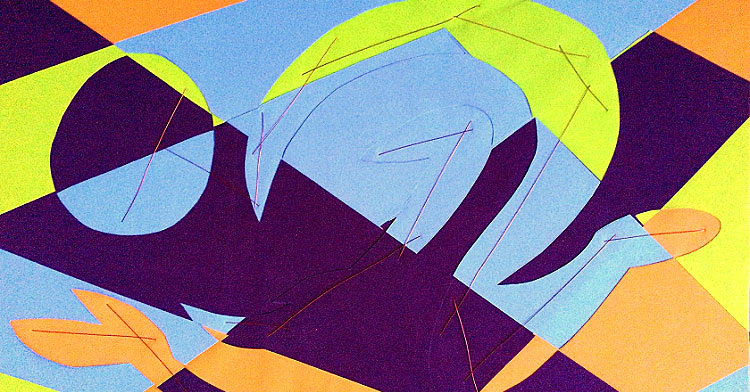
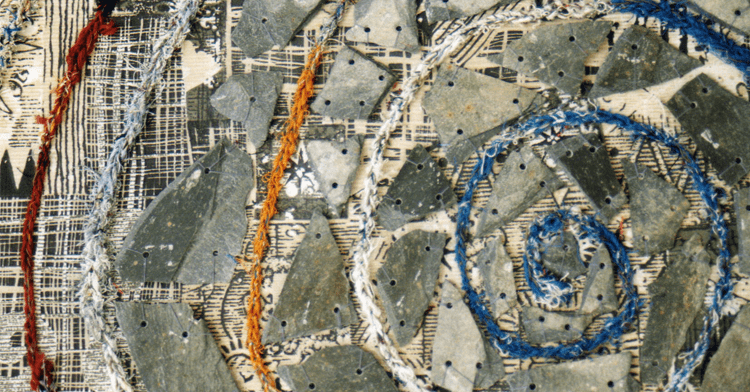
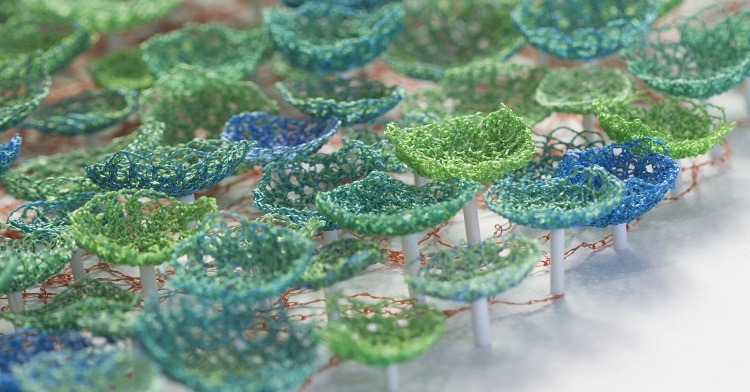
5 comments
Georgina Galanis
Leave it to the sensitivity and emotional kaleidoscope of women and their meaning making ways to instill mindfulness into mundane chores -Daily Life is an art in more ways than one. Thank you for this honorable observation and cherishing this memory in your craft.
Rose
Wonderful, learning, so much.Being inspired. I too collect recyled items,fabric,ribbons,threads etc.what a help to start my fabric art project. A journey in learning ,not being afraid . Thanks
Janice Jamieson
Wonderful jackets, great ideas for the rest of us to admire and try. Thank you, Janice
Mrs Marit Meredith
Fascinating work, and very inspirational. So looking forward to this workshop.
Judi Townsend
Fantastic inspiration. So many ideas I can work on. Thank you. Judi